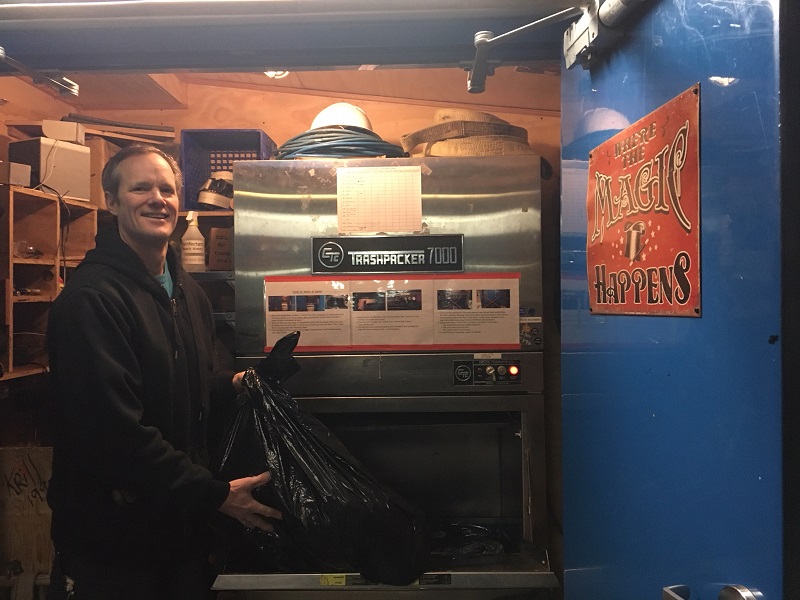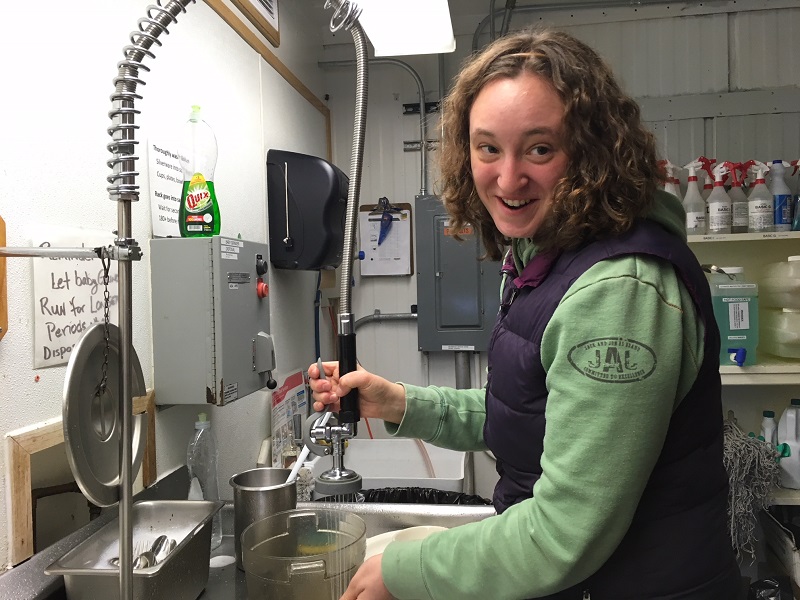
In Antarctica, everyday life is closely tied to the penguins, birds, and other wildlife surrounding us. So, what are we doing at Palmer Station to “save the penguins”?
Palmer Station has been on the Antarctic Peninsula for 50 years, and over time the station has learned a lot about minimizing its’ environmental footprint. “We took so much for granted here,” Maggie told me. “Thirty years ago, it was the philosophy of the day that the ocean could absorb anything.” Hazardous waste was disposed of by placing it in barrels, pitched off the ship and shooting it, so the barrel would sink. Similarly, trash piled into a rock gulley near station. “But,” she continued, “today we have a greater awareness about the impact we’re having on the environment, and how to dispose of the waste that we produce.”
In 2000, according to Maggie, coordinated efforts began at Palmer Station to start sorting and recycling the trash. And, since then, the push to “reduce, reuse, and recycle” has drastically improved the appearance of and minimized the environmental impact on the station. As Chuck mentioned last week (see “Diving into Earth Day”), now there is little man-made debris for the divers to pick up in the waters surrounding station.
I met with Kris Perry (pictured below in front of the garbage compactor), the station’s Waste Management Specialist, to talk about waste disposal and recycling on station. All the trash we produce on station must be shipped out. The garbage is compacted, and everything that can be recycled – cardboard, paperboard, some plastic, and metal – is recycled.

The landfill and recycling go to Punta Arenas, Chile, while the station’s hazardous waste is shipped all the way back to the U.S. Hannah James (pictured below), our Instrument Technician, assists us scientists in deciding how to dispose of laboratory waste. I would have guessed that most of the hazardous waste is produced in the labs, but Kris informed me that everyday items make up the majority of the hazardous waste. Paint, batteries, and nail polish are all classified as hazardous waste, and anything that is classified as a marine pollutant is treated with extra special care.

So, how much of what we ship off Palmer Station is recyclable? I was impressed. Approximately 60% of what is shipped out goes to a landfill, but the rest is recycled. Kris pointed out that items, like cardboard, that commonly take up a lot of volume in the trash are recyclable.
Another way Palmer Station minimizes its’ carbon footprint is by reducing food waste. Back in the U.S., approximately 1/3 of food that is produced is wasted1. At Palmer Station, we scrape all the uneaten food from our plates (see the clear plastic container in the picture below), and combine it with the uneaten served food. Every day, the total amount of wasted food is written down on a clipboard in the kitchen. KC, our Sous Chef (see “Cupcakes, Cookies, & Brownies, Oh My!”) estimates that we throw away 50% less food than other commercial kitchens. And, just like with the trash, food waste is also sorted. As a precaution to avoid exposing local bird populations to bird flu, no chicken products are released into the environment. For example, chicken broth is boiled before being poured down the drain, to ensure that it does not have the slightest potential to affect penguins and other birds.

Just as the station’s environmental practices have changed over the years, living in Antarctica changes people’s world view. “It’s so pristine here,” Zee Evans, the station’s facilities coordinator, told me. “This place really makes you think about your place in the world… and it makes you realize that we have to change what we’re doing in this world.”
That awareness follows people even when they leave Antarctica. I asked Maggie how being in Antarctica affects her lifestyle when she returns home. “It’s made me more committed to making my small place in the world, “my backyard”, a better place,” she said. And, I think that’s the secret. Too often we wonder if our small efforts to recycle and reduce waste make a difference in the world. But, Palmer Station is a place where small, conscious actions by every person in the community have made a positive difference on the surrounding environment. Recycling and reducing food waste have made this station a better place to research and “save” the penguins.
1https://www.usda.gov/oce/foodwaste/faqs.htm